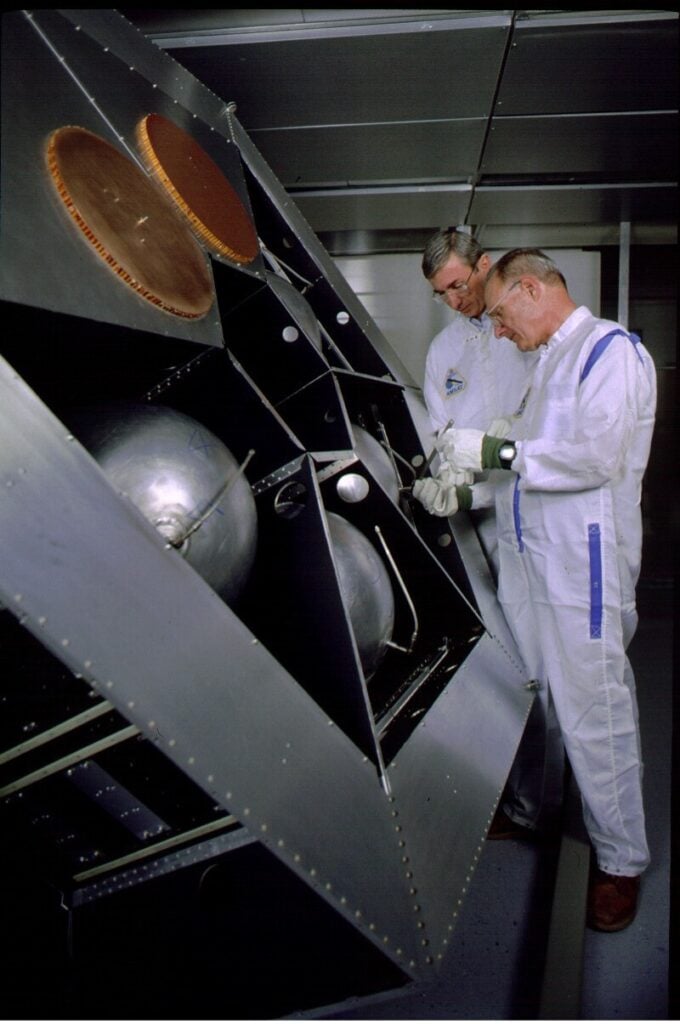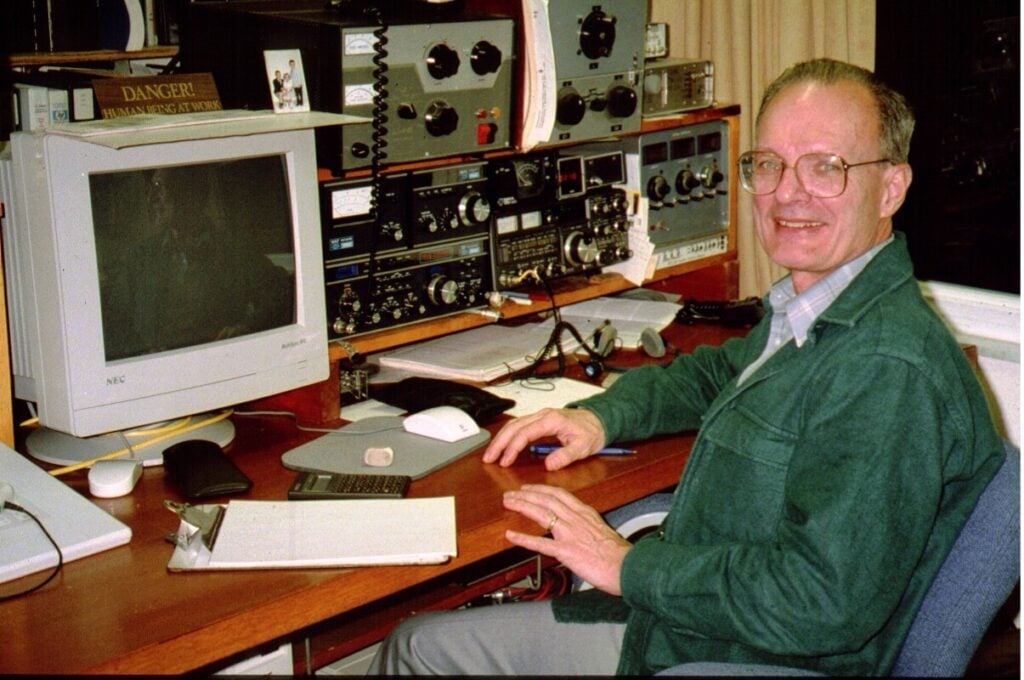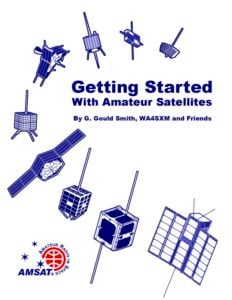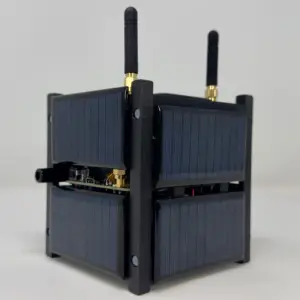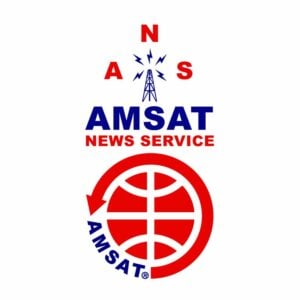
AMSAT News Service
ANS-159
June 8, 2025
In this edition:
- Nominations Close Soon for 2025 AMSAT Board of Directors Election
- NOAA-18 Decommissioned
- Request for Expression of Interest for futureGEO Project
- SO-125 FM Transponder Activated
- Changes to AMSAT TLE Distribution for June 6, 2025
- ARISS News
- AMSAT Ambassador Activities
- Satellite Shorts From All Over
The AMSAT News Service bulletins are a free, weekly news and information service of AMSAT, The Radio Amateur Satellite Corporation. ANS publishes news related to Amateur Radio in Space including reports on the activities of a worldwide group of Amateur Radio operators who share an active interest in designing, building, launching and communicating through analog and digital Amateur Radio satellites.
The news feed on https://www.amsat.org publishes news of Amateur Radio in Space as soon as our volunteers can post it.
Please send any amateur satellite news or reports to: ans-editor [at] amsat.org
You can sign up for free e-mail delivery of the AMSAT News Service Bulletins via the ANS List; to join this list see: https://mailman.amsat.org/postorius/lists/ans.amsat.org/
Nominations Close Soon for 2025 AMSAT Board of Directors Election
AMSAT solicits nominations for the 2025 AMSAT Board of Directors election, scheduled to take place in the third quarter of the year. The nomination period closes on June 15th.
The seats of the following four incumbent Directors expire in 2025 and will be filled by this year’s election:
- Barry Baines, WD4ASW
- Jerry Buxton, N0JY
- Drew Glasbrenner, KO4MA
- Zach Metzinger, N0ZGO
Further, up to two Alternate Directors may be elected for one-year terms. A valid nomination for Director must be written and requires either one Member Society or five current individual members in good standing to nominate an AMSAT member. Written nominations, with the nominee’s name, call sign, and contact information, as well as the nominators’ names, call signs, and contact information, should be sent to the AMSAT Secretary:
Douglas Tabor, N6UA
1133 Verlan Way
Cheyenne, WY 82009
AMSAT bylaws require that the nomination be written and in the form specified by the Secretary, who has elected to accept written nomination materials via postal mail or in electronic form, including email or electronic image of a paper document. Fax transmissions cannot be accepted.
Email nominations may be sent to dtabor [at] amsat [dot] org.
Regardless of the means used, petitions must be received by the Secretary no later than June 15th. The Secretary will verify the qualifications of candidates and nominating members or Member Societies as petitions are accepted and will notify candidates whether their nominations are in order by the end of June.
[ANS thanks Douglas Tabor, N6UA, AMSAT Secretary, for the above information]
AMSAT Remove Before Flight Key Tags Now Available
Yes, These are the Real Thing!
Your $20 Donation Goes to Help Fly a Fox-Plus Satellite
Includes First Class Postage (Sorry – U.S. Addresses Only)
Order Today at https://www.amsat.org/product/amsat-remove-before-flight-keychain
NOAA-18 Decommissioned
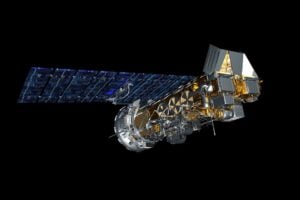
On May 31, 2025 at 1605 UTC, the NOAA-18 S-band Transmitter 4 (STX4) experienced a power drop from 7W to 0.8W. STX4 is the only remaining transmitter used for up-link (commanding) and downlink (telemetry & global science data from the recorder). Full recovery of the S-Band transmitter and its functionality is not possible, and therefore jeopardizes the ability to ensure safe operation of the spacecraft. Based on NOAA’s requirement to responsibly manage on-orbit assets, NOAA decommissioned NOAA-18 on June 6, 2025 between 1733 and 1749 UTC and the APT signal transmission ceasing was observed by amateur observers.
NOAA-18 is a legacy Polar Operational Environmental Satellites (POES) satellite and is operated with no performance or latency requirements. Users should transition to NOAA’s Joint Polar Satellite System (JPSS). JPSS provides global observations that serve as the backbone of both short- and long-term forecasts, including those that help us predict and prepare for severe weather events. The five satellites scheduled in the fleet are the currently-flying NOAA/NASA Suomi National Polar-orbiting Partnership (Suomi NPP) satellite, NOAA-20, previously known as JPSS-1, NOAA-21, previously known as JPSS-2, and the upcoming JPSS-3 and JPSS-4 satellites.
[ANS thanks the NOAA National Environmental Satellite, Data, and Information Service for the above information]
The 2025 AMSAT President’s Club Coins Are Here!
Celebrating the 40th Anniversary of Amateur Radio on Human Spaceflight
Help Support GOLF and Fox Plus.
Join the AMSAT President’s Club today!
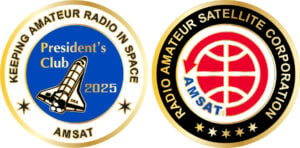
Request for Expression of Interest for futureGEO Project
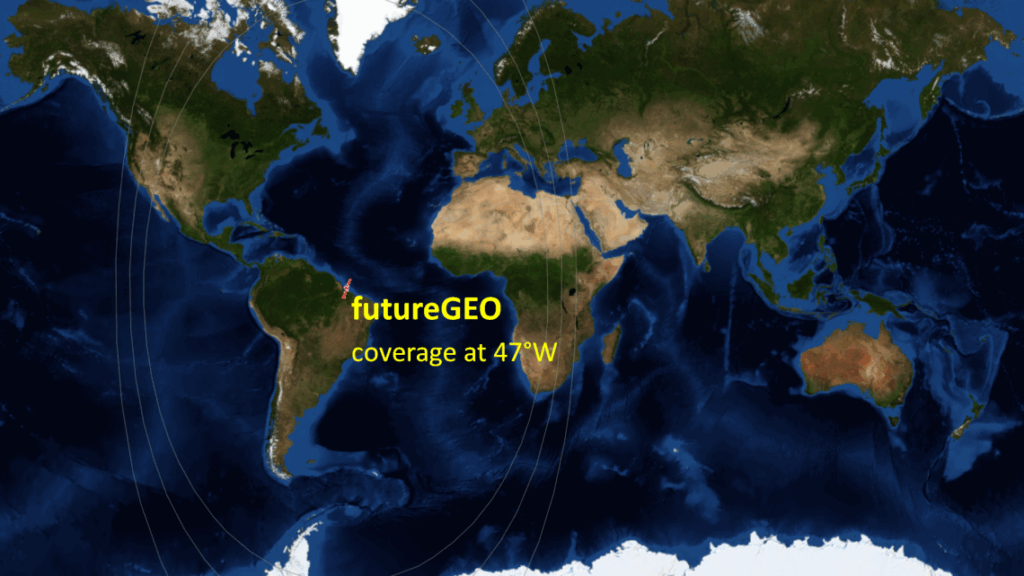
As part of AMSAT-DL’s cooperation with the European Space Agency (ESA) to prepare a future geostationary amateur radio payload project (“futureGEO”), a Request for Expression of Interest (RFEI) was recently sent to national AMSAT organizations, amateur radio associations and qualified experts worldwide.
The aim is to identify potential partners who would like to actively participate in the definition and development of a new amateur radio payload for a future geostationary satellite. Contributions should include innovative technical ideas, experiences from previous missions (e.g. QO-100) as well as concrete proposals for payloads, experiments and educational initiatives.
In particular, amateur radio organizations whose countries are members of the ESA or which are in the planned visibility range (footprint) are addressed. This means Canada, Europe, North and South America, and Africa.
Call for expressions of interest (RFEI) for futureGEO project
Unfortunately, we have noticed that not all contact details in the “AMSAT International Directory” are up to date. (Editor’s note: International AMSAT organizations should submit updated contact information for key leaders to info at amsat.org to update this directory) If you are an organization that has not received an RFEI but would like to actively participate, please contact us directly.
→ Request for Expression of Interest – RFEI “futureGEO” – Invitation Letter (PDF)
→ Future Amateur Goestationary Payload Definitions – WORK TO BE DONE (PDF)
The deadline for expressions of interest is June 30, 2025.
We look forward to your feedback and hope for committed international cooperation on this forward-looking project!
Editor’s note: The AMSAT Board of Directors and senior leadership will be submitting an expression of interest. A geostationary amateur radio satellite with a North American footprint has been sought for a very long time and AMSAT is committed to providing AMSAT-DL with any support that we can provide in this endeavor.
[ANS thanks AMSAT-DL for the above information]
SO-125 FM Transponder Activated
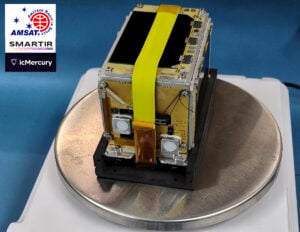
On the evening on June 5, 2025, the SO-125 FM transponder was activated for the first time. AMSAT-EA intends to activate the FM transponder on Fridays, Saturdays, and Sundays moving forward. Initial reports are that the satellite’s transponder works well. QSOs have been made via the satellite in all regions of the world.
The satellite has a 145.875 MHz uplink and a 436.666 MHz downlink. The NORAD ID for Keplerian elements is 63492.
AMSAT has submitted a request to the ARRL to have SO-125 added to the LoTW configuration file for LoTW QSO confirmations.
SO-124 (HADES-R) continues in 24 hour operation with a 145.925 MHz uplink and a 436.888 MHz downlink. Wednesdays are reserved for digital modes.
Updates on AMSAT-EA’s satellites can be found at https://x.com/eb1ao and https://x.com/AmsatSpain.
[ANS thanks AMSAT-EA for the above information]
Changes to AMSAT TLE Distribution for June 6, 2025
Two Line Elements or TLEs, often referred to as Keplerian elements or keps in the amateur community, are the inputs to the SGP4 standard mathematical model of spacecraft orbits used by most amateur tracking programs. Weekly updates are completely adequate for most amateur satellites. TLE bulletin files are updated daily in the first hour of the UTC day. New bulletin files will be posted immediately after reliable elements become available for new amateur satellites. More information may be found at https://www.amsat.org/keplerian-elements-resources/.
IRIS-A NORAD Cat ID 51044 Decayed from orbit on or about 05 JUN 2025
[ANS thanks Joe Fitzgerald, KM1P, AMSAT Orbital Elements Manager, for the above information]
Need new satellite antennas?
Purchase an M2 LEO-Pack from the AMSAT Store!
When you purchase through AMSAT, a portion of the proceeds goes towards Keeping Amateur Radio in Space.

ARISS News
Amateurs and others around the world may listen in on contacts between amateurs operating in schools and allowing students to interact with astronauts and cosmonauts aboard the International Space Station. The downlink frequency on which to listen is 145.800 MHz worldwide.
Scheduled Contacts
School in the Aznakaevsky district of the Republic of Tatarstan, Tatarstan, Russia, direct via TBD
The ISS callsign is presently scheduled to be RSØISS
The scheduled crewmember is Sergey Ryzhikov
The ARISS mentor is RV3DR
Contact is go for Sun 2025-06-08 09:05 UTC
Mountain Creek State High School, Mountain Creek, Queensland, Australia, via IK1SLD
The ISS callsign is presently scheduled to be OR4ISS
The scheduled crewmember is Takaya Onishi KF5LKS
The ARISS mentor is VK4KHZ
Contact is go for: Mon 2025-06-09 08:10:45 UTC 47 deg
Many times a school may make a last minute decision to do a Livestream or run into a last minute glitch requiring a change of the URL but we at ARISS may not get the URL in time for publication. You can always check https://live.ariss.org/ to see if a school is Livestreaming.
As always, if there is an EVA, a docking, or an undocking; the ARISS radios are turned off as part of the safety protocol.
The crossband repeater continues to be active (145.990 MHz up {PL 67} & 437.800 MHz down), If any crewmember is so inclined, all they have to do is pick up the microphone, raise the volume up, and talk on the crossband repeater. So give a listen, you just never know.
Note, all times are approximate. It is recommended that you do your own orbital prediction or start listening about 10 minutes before the listed time.
The latest information on the operation mode can be found at https://www.ariss.org/current-status-of-iss-stations.html
The latest list of frequencies in use can be found at https://www.ariss.org/contact-the-iss.html
[ANS thanks Charlie Sufana, AJ9N, one of the ARISS operation team mentors for the above information]
Want to fly the colors on your own grid expedition?
Get an AMSAT car flag and other neat stuff from our Zazzle store!
25% of the purchase price of each product goes towards Keeping Amateur Radio in Space
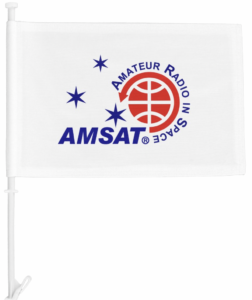
AMSAT Ambassador Activities
AMSAT Ambassadors provide presentations, demonstrate communicating through amateur satellites, and host information tables at club meetings, hamfests, conventions, maker faires, and other events.
AMSAT Ambassador Clint Bradford, K6LCS, says,
“Think a 75-minute presentation on “working the easy satellites” would be appropriate for your club or event? Let me know by emailing me at k6lcsclint (at) gmail (dot) com or calling me at 909-999-SATS (7287)!”
Clint has NEVER given the exact same show twice: EACH of the 150+ presentations so far has been customized/tailored to their audiences.
Scheduled Events
June 21, 2025
Rochester Amateur Radio Association Hamfest 2025
Barnard Fire Field
410 Maiden Lane Rochester, NY 14616
KB2YSI
September 6, 2025
Greater Louisville Hamfest
Paroquet Springs Conference Centre
395 Paroquet Springs Drive
Shepherdsville, KY 40165
W4FCL
October 16, 17, 18, 19, 2025
AMSAT Board of Directors Meeting and 43rd Annual AMSAT Space Symposium & Annual General Meeting
Holiday Inn & Suites Phoenix Airport North
1515 North 44th Street
Phoenix, Arizona 85008
Details at https://www.amsat.org/2025-symposium/
Interested in becoming an AMSAT Ambassador? AMSAT Ambassadors provide presentations, demonstrate communicating through amateur satellites, and host information tables at club meetings, hamfests, conventions, maker faires, and other events.
For more information go to: https://www.amsat.org/ambassador/
[ANS thanks Bo Lowrey, W4FCL, Director – AMSAT Ambassador Program, for the above information]
Satellite Shorts from All Over
+ The FCC has denied AST Space Mobile’s request to use 430 MHz -440 MHz for telemetry operations, noting “There is no space tracking or space telemetering allocation in the 430-440 MHz frequency range.” (Thanks to AMSAT-DL and the FCC for the information)
+ A paper by Hope Lea, KD2L, and Ruth Willet, KM4LAO, entitled “Empowering the Next Generation Through Space Communication” was selected best in “The Next Generation” part of the SpaceOps 2025 conference in Montreal. This paper discussed ARISS and YOTA. AMSAT congratulates them on their outstanding work! (Thanks to ARISS for the information)
+ The FCC’s #FridayFlashback on X this past week highlighted amateur radio. View FCC amateur radio ads from years past in the thread at https://x.com/FCC/status/1931024023023984709
Join AMSAT today at https://launch.amsat.org/
In addition to regular membership, AMSAT offers membership to:
- Societies (a recognized group, clubs or organization).
- Primary and secondary school students are eligible for membership at one-half the standard yearly rate.
- Post-secondary school students enrolled in at least half time status shall be eligible for the student rate for a maximum of 6 post-secondary years in this status.
- Memberships are available for annual and lifetime terms.
Contact info [at] amsat.org for additional membership information.
73 and remember to help Keep Amateur Radio in Space!
This week’s ANS Editor,
Paul Stoetzer, N8HM
n8hm [at] arrl.net
ANS is a service of AMSAT, the Radio Amateur Satellite Corporation, 712 H Street NE, Suite 1653, Washington, DC 20002


